As an Amazon Associate I earn from qualifying purchases.
While this is a pretty classic salsa verde Mexicana, pretty much every culture has a green sauce of some sort.
Elsewhere on this site I have a German green sauce and an Italian salsa verde, both with fish. I like both sauces, but they’re not this one. This is what most Americans think of when you hear the words salsa verde. It’s a Mexican classic, and a good thing to know how to make.
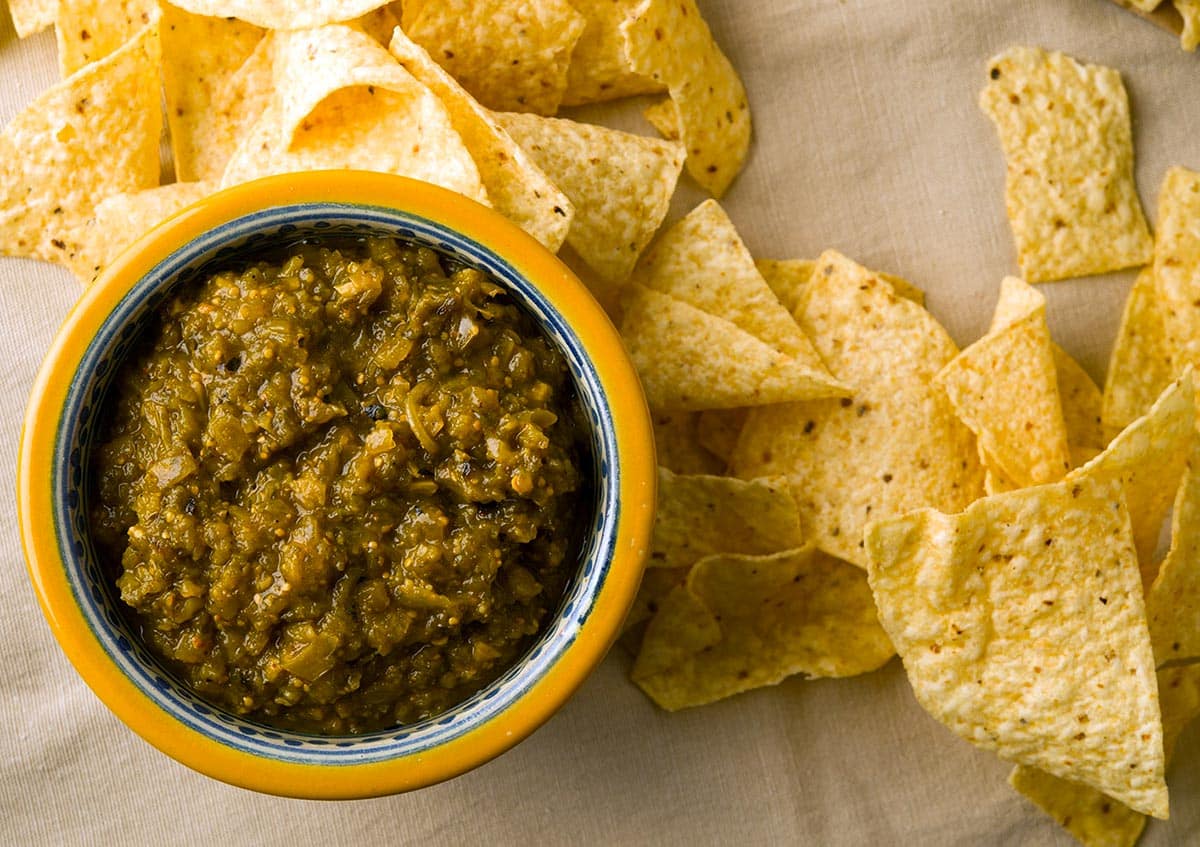
The recipe below is one I’ve tinkered with over the years, after eating lots of them and trying recipes from all over Mexico. What I like most about this version of salsa verde Mexicana is that almost everything is grilled or charred, and that adds a ton of flavor to the final salsa.
As with most recipes, the quality of what you put in and your technique determine the quality of the final dish. Yes, there are perfectly authentic salsa verde recipes where you boil everything first, and there is also a completely raw salsa verde Mexicana that I do like a lot, but the smoke and char of this version wins, to my mind.
If you can make this salsa verde on a smoky grill, it will be surpassingly good. My next choice would be an iron or steel comal or flattop. Directly over a gas burner would work, too, as would a broiler — but I honestly don’t love the broiler for this salsa. But if that’s all you have, go for it.
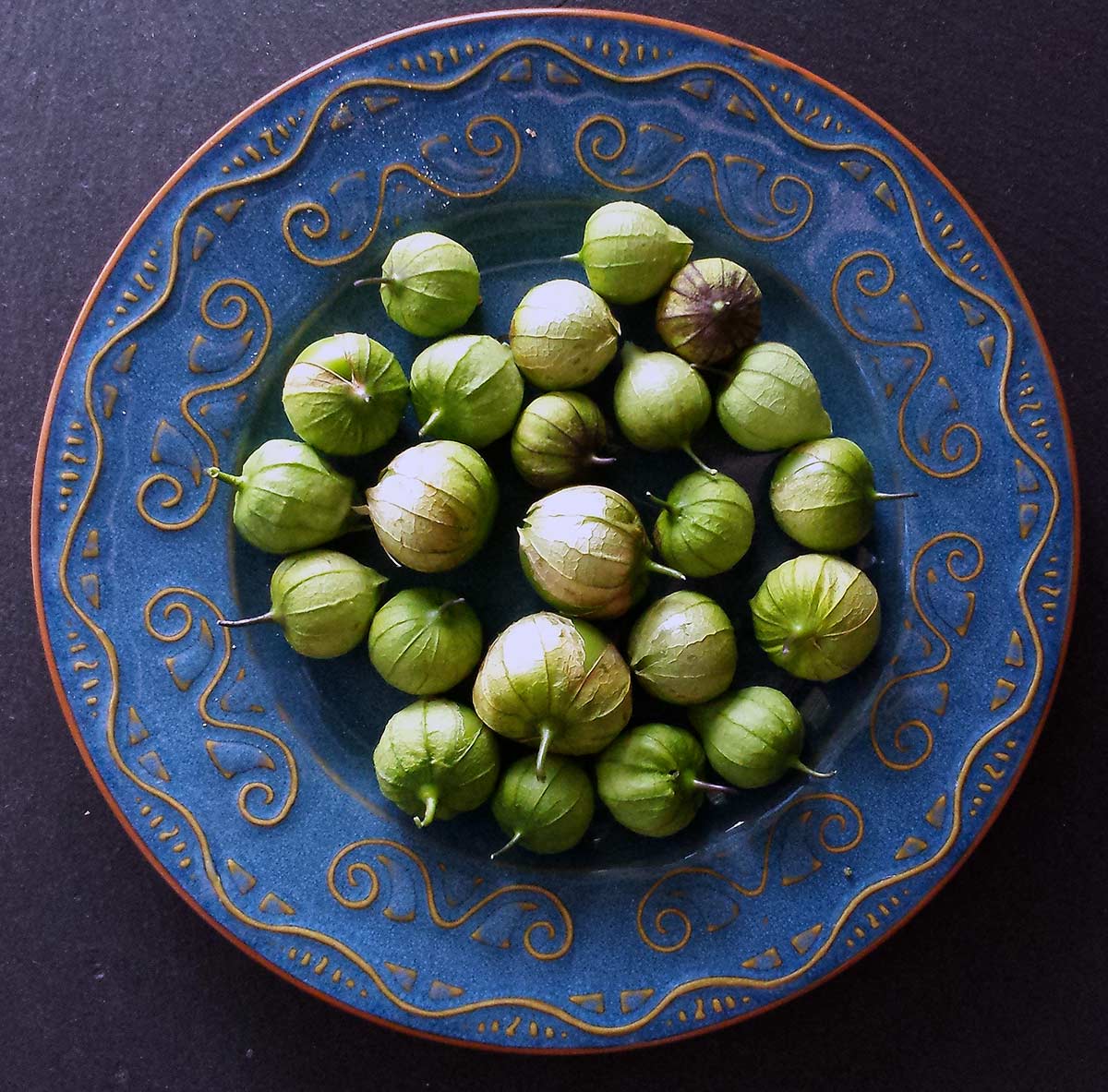
I prefer to use the tiny, “wild” tomatillos for this recipe, which are known as milpa in Mexican markets. But really any tomatillo will work. Just don’t use the purple ones, as they’re too ripe for this. You want the acidity of green tomatillos, especially if you are canning. I happen to have them growing uncontrollably in my garden. How they got there, I have no idea.
I also like to use New Mexican Hatch green chiles here, too, which are Anaheim chiles when grown somewhere else. They’re cheap, plentiful and will often grow pretty straight, making them easier to roast and peel. Chilaca or poblanos are excellent, too. You could use jalapenos or even a regular green bell pepper if you had to.
My rendition of salsa verde Mexicana uses epazote, too. Not much, but just enough of this powerful herb to let you know it’s there. Cilantro is the primary herb here, though.
How do you use this salsa verde Mexicana? Well, with tortilla chips, of course. But also as a base for chile verde with pork, chicken, pheasant or whatever. And like all green sauces, it’s fantastic with fish. One classic recipe that uses this salsa is chicharron en salsa verde.
This recipe can be canned, with a couple minor alterations I detail below. Since you need to do a lot of charring and roasting to make it, it’s a good idea to whip up a big batch and can or freeze what you don’t eat straight away.
I make a lot of different salsas. You might like my salsa negra, or a salsa morita, which uses chipotles, a fire roasted salsa, or if you like things picante, my salsa de chile de arbol.
Tomatillo Salsa Verde Mexicana
Ingredients
- 1 to 2 pounds husked tomatillos, preferably the little milpa tomatillos
- 1 1/2 cups poblano or Anaheim chiles, roasted, peeled, seeded and chopped (about 4)
- 1/2 cup jalapenos, peeled, seeded and chopped (about 3 to 5)
- 4 cups white or yellow onions, sliced
- 6 cloves garlic, whole and unpeeled
- 1 tablespoon cumin
- 1 tablespoon dried oregano, preferably Mexican
- 1 tablespoon kosher salt
- 2 tablespoons chopped epazote (optional)
- 1/4 cup chopped cilantro
- Lime juice to taste
- Fruit Fresh or other source of citric acid (only if canning)
Instructions
- If you don't have your green chiles and jalapenos prepped, follow these directions for roasting peppers. Arrange the tomatillos, sliced onions and the garlic cloves on a cooking sheet (or two) and set under the broiler until they are a bit charred.
- Once you have all the vegetables prepped, peel the garlic and put it and everything else into a food processor and pulse to make a rough salsa. You're done if you don't want to can your salsa. Kept in a covered container, it will keep a week in the fridge.
- If you are canning, add 1 teaspoon of the Fruit Fresh (citric acid) to each pint jar; the jars should be sterilized beforehand. Pack the salsa into the jars, and use a knife of chopstick to remove as many air pockets as you can find. Leave about 1/2 inch headspace. Seal the jars and process in a boiling water bath for 15 minutes.
- When the jars are ready, lift out of the boiling water and let them rest until their lids plink. Once they've cooled to room temperature, the salsa will keep in the pantry for more than a year.
Nutrition
Nutrition information is automatically calculated, so should only be used as an approximation.
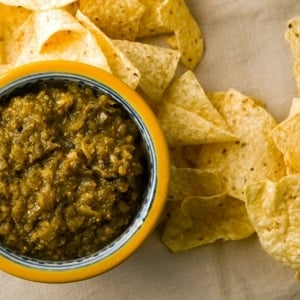
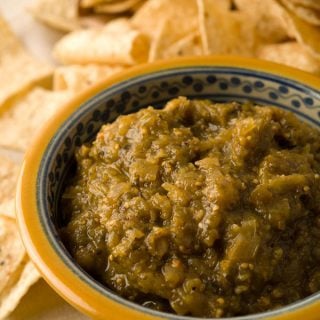

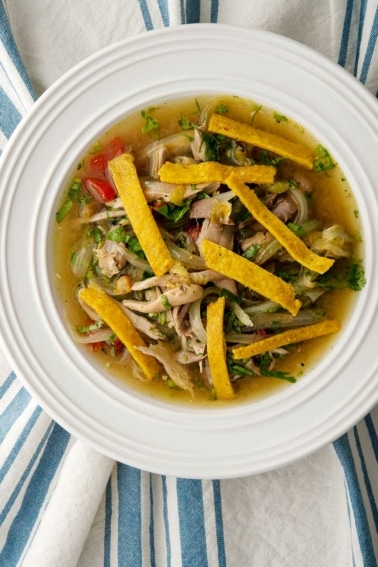
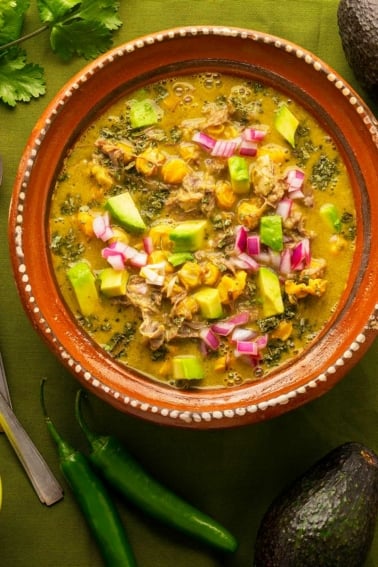
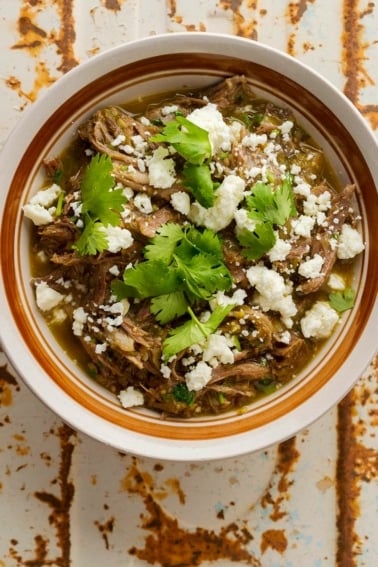
Wonderful, like all of Hank’s recipes. But for my taste, I would reduce or eliminate the cumin next time.
I’ve been making salsa verde for a while and decided to try this version. Omg, delicious. I probably added twice the volume of both kinds of peppers trying to use up end of the season harvest so it’s on the hotter side but the cumin addition just kicks up the flavor a huge step. Thank you!
In your Pork Chili Verde recipie you say
“A note on the chile verde sauce. I make big batches and can it, which is a lot easier. It’s basically the same recipe as here, only with a bit of added vinegar.”
What is the equivalence to a bit of added vinegar? I don’t have fruit-fresh on hand.
Andy: Maybe a tablespoon per pint? I eyeball it.
Ended up using hungarian peppers in lieu of the anahaeim peppers. Also used half tomatillos and half green tomatoes because that is what I had available from the garden. Still turned out fantastic. Big hit with the fam.
Hi, Hank.
I’m really enjoying reading and making your recipes, and about your various adventures. Hope the cold is much better by now.
On the Salsa Verde recipe card, it doesn’t mention that the jalapenos should be roasted.
Regards,
Joe
Joe: Ooops! I’ll fix that.
This is a yearly canning staple for me and my garden! Come winter there’s always salsa on hand for a big pot of hanks chili verde!
Today we used this recipe to clear out the last of our green tomatoes and immature tomatillos. It’s delicious and looks just like the photo (which almost never happens!). Sadly we don’t have enough to justify canning, but we will have some awesome enchiladas tonight.
I made a huge batch of this recipe before and it was a huge hit! Especially since I used it as the base for the chile verde. My question is if you are making a large batch would you recommend charring your veggies on the grill?
Sean: Absolutely. That’s what I do.
Is it okay to freeze this salsa of you don’t have mason jars and canning equipment at your disposal…yet?